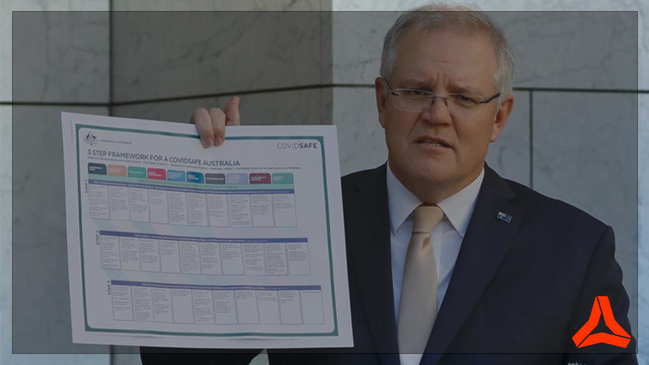Roadmap to a COVID Safe Australia

Prime Minister Scott Morrison has revealed the National Cabinet's proposed 3-step plan to ease restrictions across Australia.
The announcement highlighted that each state and territory leader will have the ability to decide on the best timeline given their individual circumstances. In an effort to ensure the flattening of the curve, the "Roadmap to a COVIDsafe Australia", will be reviewed every 3 weeks to monitor progress.
According to the Department of Health, the first and most important step was to reconnect with friends and family. Step 1 allows small groups of up to 5 visitors in people's homes and 10 people at outdoor gatherings. Physical distancing and hygiene were to be maintained to stop the spread.
Further, step 2 increased gathering numbers and the reopening of affected businesses. Moreover, Step 3 further increases the number of people at gatherings to 100. People are also able to return to the workforce and interstate travel has restarted.
The progress and continual "flattening of the curve" has placed Australia in a positive position and moves us closer to recovery. This is great news for the logistics industry. With restaurants and bars opening with limitations, trains, and buses increasing the number of people allowed on board, it's a step towards a recovered community. New South Wales Premier, Gladys Berejiklian, announced the reopening of schools full-time from May 25. These movements are positive steps for the economy.
On the other hand, a downfall of there recent updates refers to the significant tariff China placed on the export of Australian Barley. At least 50% of Australia's Barley is exported to China. Therefore, tensions are increasing between Australia and China. These tensions began with Prime Minister Scott Morrison's involvement in the promotion of an investigation into the origins of the COVID-19 virus.
Australian barley farmers are facing an 80% tariff on their crops. The introduction of such tariffs potentially blocking them from selling barley to their most lucrative market. The percentage is made up of two tariffs introduced on the export of barley. The first 73.6% tariff and the second 6.9% tariff relate to claims China has made against Australia. These claims refer to the alleged dumping of barley, selling the crop for more than it costs farmers to grow. The second claim relates to the subsidization of farmers by the Australian government.
Trade Minister Simon Birmingham is currently deciding on whether an appeal to the World Trade Organisation (WTO).
Contact us today for more information on how TGL can help you with your import and export needs.


